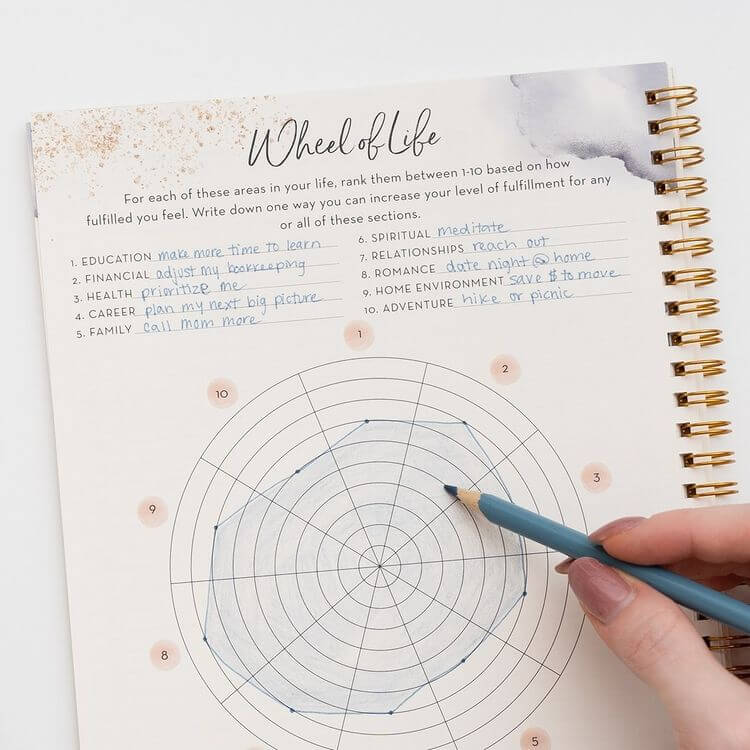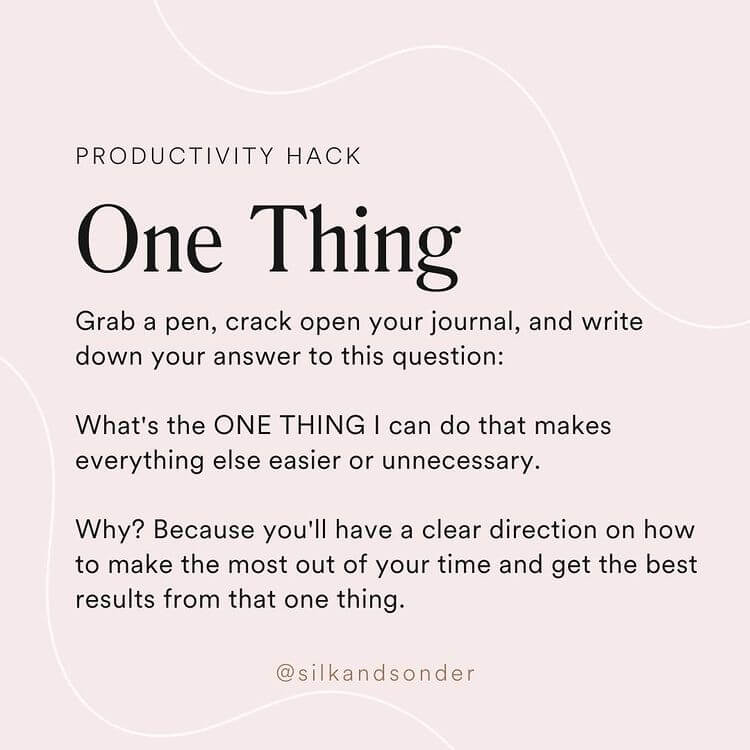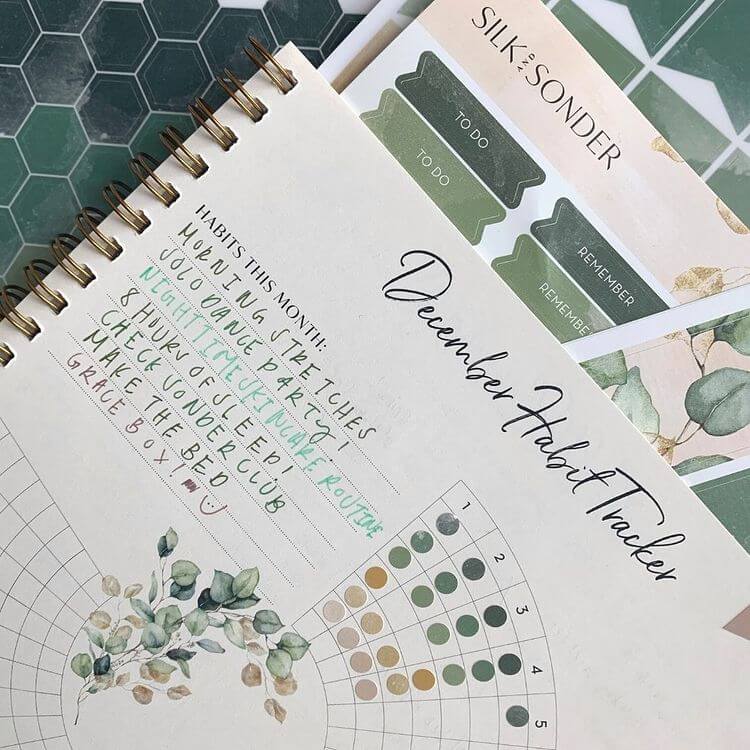People often think that because I run a self-care startup, I must live a perfectly balanced life. Even I assumed that I knew the boundaries and habits I needed to put in place to take care of myself while running my company.
And yet, despite spending the past three years building Silk + Sonder—thinking about self-care every day, writing monthly journaling prompts for our members, and even being the voice of the audio meditations on our app—I recently found myself experiencing burnout like I never had before.
It wasn’t caused by a major company event or life crisis, just the typical requirements of being a founder. Every day, I was switching between big-picture thinking and putting out short-term fires. I was constantly making decisions across operations, product, marketing, and growth. I had been saying yes to every meeting and was constantly finding another problem to tackle.
Without me really noticing, my personal care habits started slipping: I wasn’t going to the gym, wasn’t eating the right foods, and was feeling pressure to keep the people in my life happy even though I had less social time than ever. I was overextending myself, but as a founder, I’m so used to operating outside my comfort zone and facing challenges left and right that I didn’t think anything of it.
Until one day, when I woke up with a headache so intense that I couldn’t even look at my phone. I took some Advil and hoped it would subside by the time I finished my morning journaling—but found I couldn’t even look at the words on the page. When I started feeling nauseous, I knew something was wrong. I managed to eke out a text to my assistant to clear my calendar for the day, then texted a founder friend for advice. “I think you’re experiencing burnout,” she said. I was in disbelief because I always associated burnout with heightened anxiety, not debilitating exhaustion.
I spent the next eight hours lying on the couch doing absolutely nothing. I needed to unplug, but even my go-to unplugging tools like a book or a podcast felt too draining.
After a day of rest, I was thankfully ready to get back in action. But I knew that if I didn’t address the root cause, I’d be incapacitated again before I knew it. And while some good, old-fashioned self-care spurred my immediate recovery, the long-term solution involved deeper changes in how I was approaching my work.
Here are the strategies that have helped me escape and avoid the burnout cycle since.
I started by reassessing my energy needs
Immediately, I knew I needed to make some adjustments in how I was spending my time so that I could better protect my energy.
Making my calendar work for me
First, I looked for ways to rework my calendar. I tend to operate best when I have two to three hours of focused work a day, but leading up to the burnout I had been ignoring that structure. So I blocked off some uninterrupted work hours each day and looked for meetings I could cut from my calendar, such as recurring check-ins where updates could instead be shared asynchronously.
Using an energy map to delegate
I also revisited how I was spending my time by creating an energy map: writing down all my daily and weekly tasks and categorizing which of them charged or drained me. I knew I wanted to spend most of my day on energy-giving activities, so this became an instant guidebook for what I needed to delegate. I noticed that sourcing candidates and taking the screening calls was draining a lot of time and energy, and it could readily be handed off. To this day, I’ll create a new map when my to-do list feels like it's getting out of hand.
Reserving time for myself
Finally, I looked for ways to recommit to my wellness needs. I started pre-booking workout classes throughout the week so I wouldn’t neglect exercise and became more intentional about spending my weekends filling my cup with activities like journaling, reading, and fun social outings.

I’ve worked on strategizing instead of reacting
One of the problems that led to my burnout was that I had fallen into reaction mode, constantly playing whack-a-mole with every question, need, and problem that came up. I knew that I had to get more strategic about how I was approaching the needs of my business so that I could focus on the most important tasks, rather than being pulled in a thousand directions.
Choosing one primary goal every day
I started by adopting a technique we recommend in our Silk + Sonder planners, in which you pick one thing to get done each day that will make everything else easier. I like to focus my one thing on expansive creative thinking for my business or tasks that make me a more effective CEO. I know that, unless the company is literally burning to the ground, these should take priority over other tasks that come up throughout the day.

Setting realistic expectations with my team
I also had to be more transparent about when I could address questions or review deliverables from my team members, even if it wasn’t on their deadline. I’m always tempted to stop what I’m doing and address their needs—especially when I’m holding them back from getting something done—but I found that communicating realistic timelines has been better received than over-committing and under-delivering (or working myself into the ground to deliver anyway).
Empowering my employees to make their own decisions
Finally, I’ve been working on removing myself from every business decision. If a teammate comes to me for input in an area I don’t know much about, I’ll be honest with them that, while I’m happy to talk through it, I trust their expertise. This helps empower them with the knowledge that they can make decisions without me. All around, it’s been better for them, better for me, and better for the business.
I’m consistently building new positive habits
Finally, I’ve found that the journey to create healthy habits to avoid burnout is a continuous one. Not only have I regularly had to adjust or recommit to habits when I feel burnout creeping on again, I’ve had to remind other people in my life of my needs. After all, I am the best advocate for my own well-being.

Reducing notifications & checking messages on my own time
For instance, to reduce the temptation to context switch and reshift intended priorities, I’ve disabled Slack notifications and email previews from my phone and computer. I am aware of my tendency to invite distractions in—especially if they help others move faster—but I’ve realized that, more often than not, my involvement can wait. To preserve time for flow and creative thinking, I check these accounts a few times per day on my schedule. I use this same approach in my personal life, reminding my fiance and family members that, just because I’m not in a meeting, doesn’t mean I’m available for personal or home-related questions.
Training my team on when to treat something as urgent
People know that if there’s a true emergency they can text or call me, but I’ve also been working on training my team on knowing when something is truly urgent. I encourage them to ask themselves, “Is this so urgent that whatever Meha is working on, she needs to stop right this second to help deal with it?”
It’s hard to do this when you feel like everyone is looking to you, but ultimately I think founders put more pressure on themselves than they need to. I’ve found that my team appreciates my trust in them, as well as my transparency around my needs. In fact, they respect that I’m setting myself up to do my best work for them and for the business.

